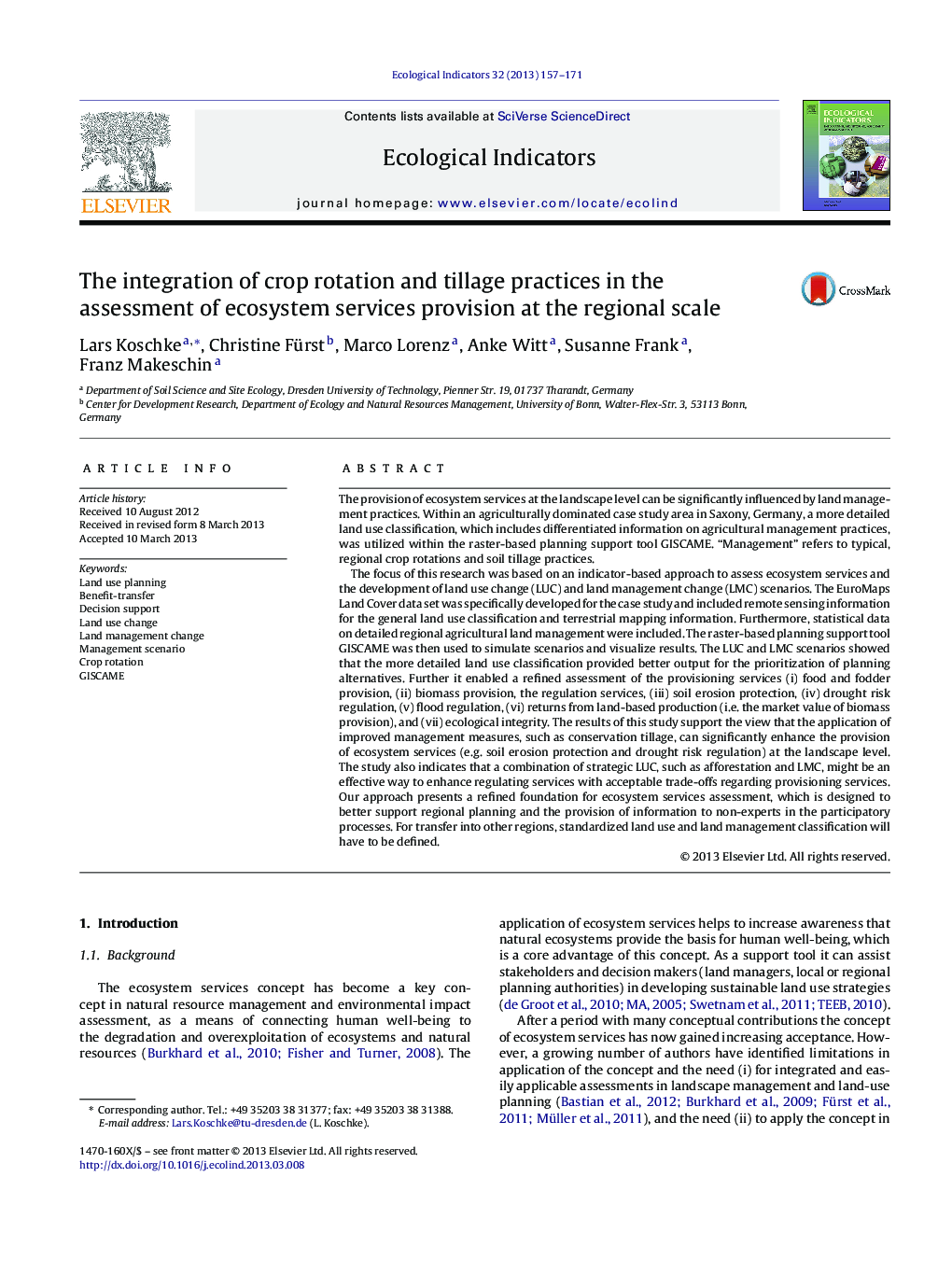| Article ID | Journal | Published Year | Pages | File Type |
|---|---|---|---|---|
| 4373398 | Ecological Indicators | 2013 | 15 Pages |
•Use of a high resolution integrated land use data set enhances the consideration of ecosystem services in regional planning.•The land use and land management data set provides an improved basis for ecosystem services assessment/mapping.•More realistic land use scenarios help to estimate the impact of and create optional land development and policy strategies.•Regulating services improve by less intensive land use while provisioning services are not necessarily heavily impacted.•Efforts aiming at afforestation should be accompanied by programs that promote adaptation of land management practices.
The provision of ecosystem services at the landscape level can be significantly influenced by land management practices. Within an agriculturally dominated case study area in Saxony, Germany, a more detailed land use classification, which includes differentiated information on agricultural management practices, was utilized within the raster-based planning support tool GISCAME. “Management” refers to typical, regional crop rotations and soil tillage practices.The focus of this research was based on an indicator-based approach to assess ecosystem services and the development of land use change (LUC) and land management change (LMC) scenarios. The EuroMaps Land Cover data set was specifically developed for the case study and included remote sensing information for the general land use classification and terrestrial mapping information. Furthermore, statistical data on detailed regional agricultural land management were included. The raster-based planning support tool GISCAME was then used to simulate scenarios and visualize results. The LUC and LMC scenarios showed that the more detailed land use classification provided better output for the prioritization of planning alternatives. Further it enabled a refined assessment of the provisioning services (i) food and fodder provision, (ii) biomass provision, the regulation services, (iii) soil erosion protection, (iv) drought risk regulation, (v) flood regulation, (vi) returns from land-based production (i.e. the market value of biomass provision), and (vii) ecological integrity. The results of this study support the view that the application of improved management measures, such as conservation tillage, can significantly enhance the provision of ecosystem services (e.g. soil erosion protection and drought risk regulation) at the landscape level. The study also indicates that a combination of strategic LUC, such as afforestation and LMC, might be an effective way to enhance regulating services with acceptable trade-offs regarding provisioning services. Our approach presents a refined foundation for ecosystem services assessment, which is designed to better support regional planning and the provision of information to non-experts in the participatory processes. For transfer into other regions, standardized land use and land management classification will have to be defined.
